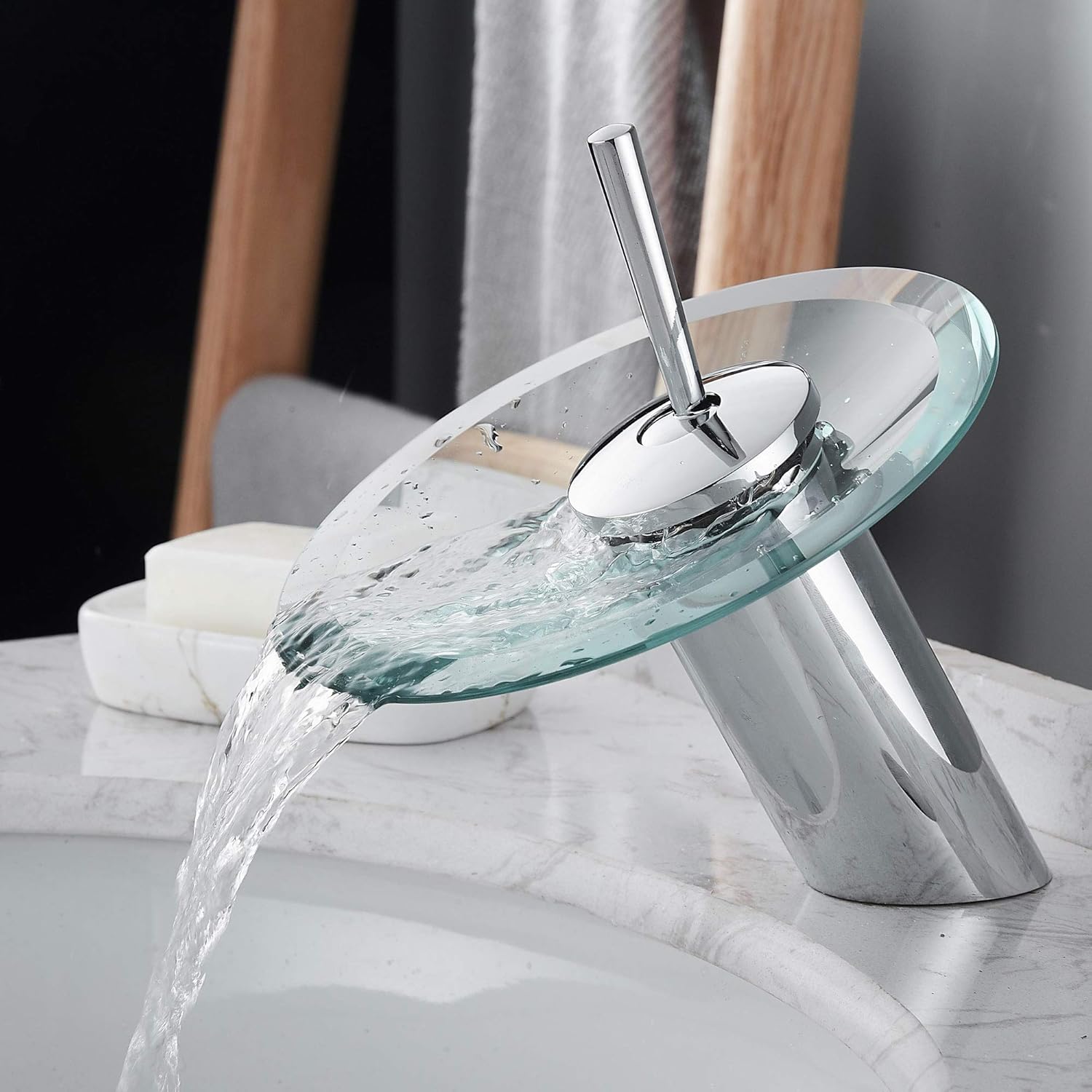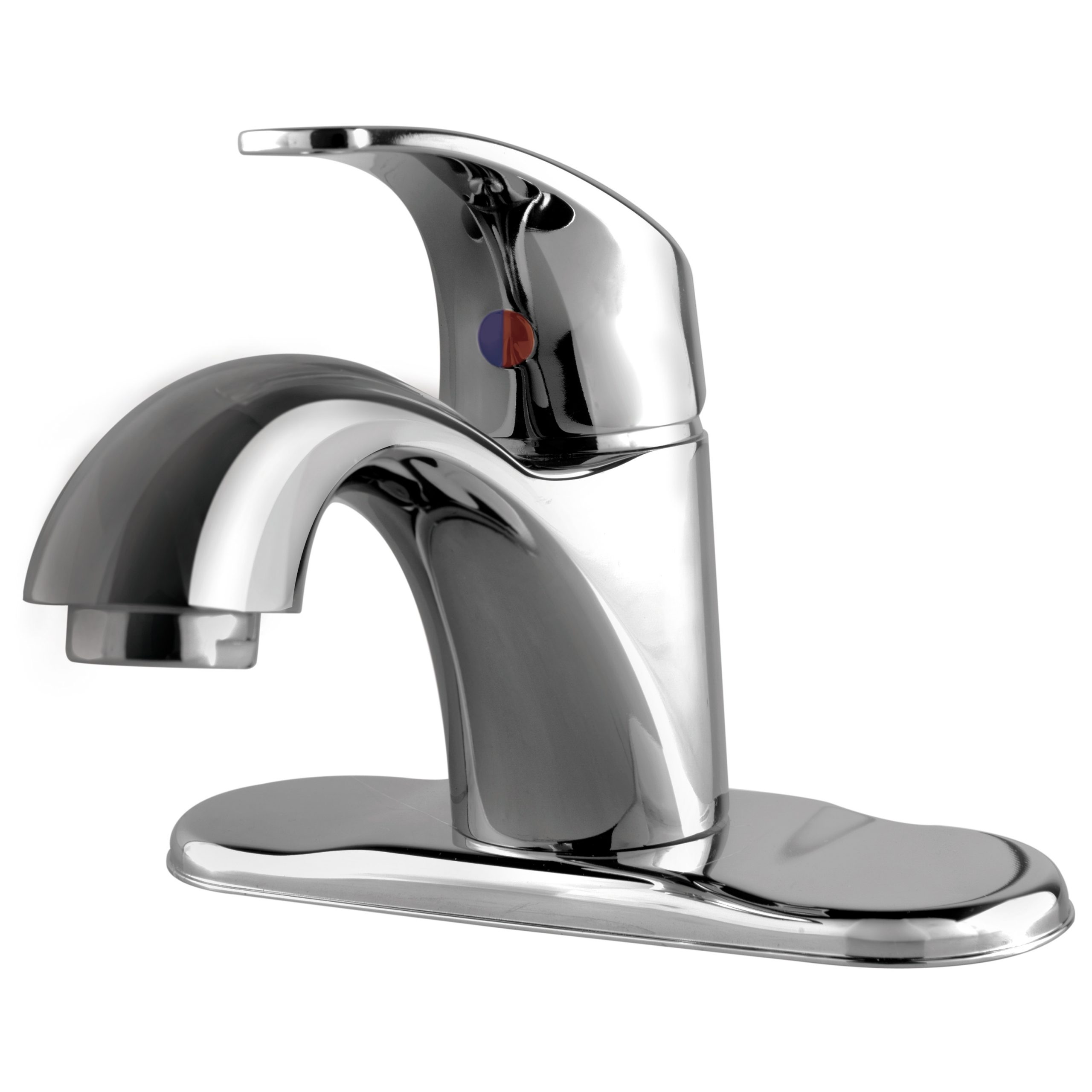Single Head Bathroom Faucet Types

Single head bathroom faucets are a common fixture in many homes. They offer a simple and stylish way to control the flow of water for your bathroom sink. But with so many different types available, choosing the right one for your needs can be overwhelming. This guide will help you navigate the different types of single head bathroom faucets and their features, pros, and cons.
Types of Single Head Bathroom Faucets
There are several types of single head bathroom faucets, each with its own unique features and benefits. Here’s a breakdown of the most common types:
- Centerset Faucets: Centerset faucets are the most common type of single head bathroom faucet. They feature a single handle that controls both the temperature and flow of water. The handle is typically located in the center of the faucet base, hence the name. These faucets are relatively inexpensive and easy to install.
- Widespread Faucets: Widespread faucets are similar to centerset faucets, but they have a wider spread between the handle and spout. This makes them a good choice for larger sinks or those with a more contemporary design.
- Wall-Mount Faucets: Wall-mount faucets are mounted to the wall instead of the sink. This gives them a sleek and minimalist look, and they can be a good option for smaller bathrooms or those with limited counter space.
- Roman Tub Faucets: Roman tub faucets are designed for use with freestanding tubs. They typically have a long, curved spout and a separate handle for controlling the flow of water.
Popular Single Head Bathroom Faucet Styles
Single head bathroom faucets come in a wide range of styles, from traditional to contemporary. Some of the most popular styles include:
- Contemporary: Contemporary faucets are characterized by their clean lines and minimalist design. They often feature sleek, geometric shapes and a chrome finish.
- Traditional: Traditional faucets have a more classic look, with ornate details and a polished finish. They often feature cross handles or lever handles.
- Modern: Modern faucets blend contemporary and traditional elements. They often feature a minimalist design with a touch of elegance.
Comparison Table
Here’s a table comparing the different types of single head bathroom faucets based on their features, price range, and common applications:
| Type | Features | Price Range | Common Applications |
|---|---|---|---|
| Centerset | Single handle, center-mounted | $20 – $100 | Standard bathroom sinks |
| Widespread | Single handle, wider spread | $50 – $200 | Larger bathroom sinks, contemporary designs |
| Wall-Mount | Mounted to the wall | $100 – $300 | Smaller bathrooms, limited counter space |
| Roman Tub | Designed for freestanding tubs, long curved spout | $200 – $500 | Freestanding tubs |
Installation and Maintenance: Single Head Bathroom Faucet

Installing a single-head bathroom faucet might seem daunting, but with the right tools and a little patience, it’s a DIY project within reach. Proper maintenance ensures your faucet functions smoothly and lasts for years.
Installing a Single Head Bathroom Faucet
Installing a single-head bathroom faucet involves replacing the existing one with a new one. This process typically involves removing the old faucet, installing the new faucet, and connecting it to the water supply.
- Turn off the water supply: Locate the shut-off valves for the hot and cold water lines to the sink. Turn the valves clockwise to shut off the water supply.
- Remove the old faucet: Unscrew the old faucet’s mounting nuts from underneath the sink using a wrench. If the faucet is corroded, you might need to use a pipe wrench for a tighter grip.
- Remove the old faucet’s supply lines: Disconnect the hot and cold water supply lines from the old faucet. Use a wrench to loosen the compression nuts or slip-joint nuts connecting the supply lines to the faucet.
- Prepare the new faucet: Inspect the new faucet and ensure all parts are included. Apply plumber’s tape to the threads of the supply lines and the faucet’s inlets to prevent leaks.
- Install the new faucet: Position the new faucet in the sink’s mounting holes and tighten the mounting nuts from underneath the sink using a wrench. Ensure the faucet is level and secure.
- Connect the supply lines: Attach the supply lines to the new faucet’s inlets and tighten the compression nuts or slip-joint nuts.
- Turn on the water supply: Slowly turn the shut-off valves counterclockwise to turn on the water supply. Check for leaks around the faucet, supply lines, and mounting nuts. Tighten any loose connections.
- Test the faucet: Run hot and cold water through the faucet to ensure proper function. Check for any leaks or drips.
Maintaining a Single Head Bathroom Faucet
Regular maintenance is crucial for ensuring the longevity of your single-head bathroom faucet. This includes cleaning, inspecting, and addressing minor issues before they escalate.
- Clean the faucet regularly: Wipe down the faucet with a soft cloth and mild soap to remove dirt, grime, and mineral deposits. Avoid abrasive cleaners that can damage the finish.
- Clean the aerator: The aerator is a small, removable screen at the faucet’s spout that mixes air with water, creating a smooth stream. Remove the aerator and clean it with a toothbrush and vinegar solution to remove mineral deposits.
- Inspect the faucet for leaks: Check for leaks around the faucet’s spout, handle, and base. If you notice any leaks, tighten the connections or replace any worn-out washers or O-rings.
- Lubricate the faucet’s handle: If the faucet’s handle feels stiff or difficult to turn, apply a small amount of lubricant to the handle’s stem. This will help to smooth out the movement and prevent wear and tear.
Troubleshooting Common Issues, Single head bathroom faucet
While single-head bathroom faucets are generally reliable, issues can arise. Understanding common problems and their solutions can save you time and money.
- Leaks: Leaks can occur at the faucet’s spout, handle, or base. Tighten the connections, replace worn-out washers or O-rings, or even the entire cartridge if necessary.
- Drips: Dripping faucets are usually caused by worn-out washers or O-rings. Replace these components to stop the dripping.
- Low Water Pressure: Low water pressure can be due to clogged aerators, mineral deposits in the faucet’s cartridge, or a problem with the water supply line. Clean the aerator, replace the cartridge, or check the supply line for obstructions.
Single Head Bathroom Faucet Considerations

Choosing the right single head bathroom faucet can significantly impact your bathroom’s functionality and aesthetics. It’s a decision that should be approached carefully, considering factors such as your budget, the style of your bathroom, and the desired functionality.
Finishes
The finish of your single head bathroom faucet can greatly influence the overall look of your bathroom. Here are some popular options:
* Chrome: This is a classic and timeless finish that is known for its durability and easy maintenance. Chrome faucets are often found in modern and contemporary bathrooms.
* Brushed Nickel: This finish has a slightly matte appearance and offers a more subtle and sophisticated look compared to chrome. Brushed nickel faucets are often found in transitional and traditional bathrooms.
* Oil-Rubbed Bronze: This finish has a warm, rustic look and is often used in bathrooms with a traditional or farmhouse style. Oil-rubbed bronze faucets can add a touch of elegance and sophistication to any bathroom.
Choosing the Right Single Head Bathroom Faucet
Choosing the right single head bathroom faucet for your bathroom depends on several factors:
* Size: If you have a small bathroom, a smaller faucet with a shorter spout might be the best option. For larger bathrooms, a larger faucet with a longer spout can provide a more dramatic and luxurious look.
* Style: The style of your bathroom should be considered when choosing a faucet. For example, a modern bathroom might benefit from a minimalist faucet with clean lines, while a traditional bathroom might look better with a more ornate faucet.
* Functionality: If you need a faucet with a special feature, such as a pull-out sprayer or a temperature control system, make sure to choose a faucet that offers those features.